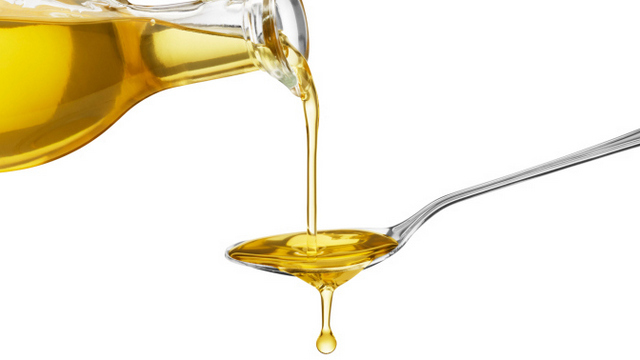
Recently, we have been hearing a lot about the ancient Ayurvedic practice of oil pulling, so we decided to do some research and let our fans know what this is all about.
Oil pulling is an ancient Ayurvedic remedy for oral health and detoxification. It involves the use of pure oils as agents for pulling harmful bacteria, fungus and other organisms out of the mouth, teeth, gums and even throat. The basic idea is that oil is swished in the mouth for a short time each day and that this action helps improve oral health.
The basic principle is like that of any oil cleanse. Though it seems illogical that an oil can cleanse, you can see here, as found for skin care, the same principle applies. Oil is able to cut through plaque and remove toxins without disturbing the teeth or gums.
How to Do Oil Pulling?
The most effective oil pulling is done by placing about a tablespoon of cold-pressed organic sesame oil (any vegetable oil that is high enough quality to eat can be used, like organic coconut or organic olive oil) into the mouth and swishing the oil around the mouth for approximately 20 minutes and then spitting it out.
First, the oils mix with the saliva, turning it into a thin, white liquid. Lipids in the oils begin to pull out toxins from the saliva. As the oil is swished around the mouth, teeth, gums and tongue, the oil continues to absorb toxins, and usually ends up turning thick and viscous and white. Once the oil has reached this consistency (after about 20 minutes), it is spit out before the toxins are reabsorbed.
Here is a step-by-step guide:
1. Put one to two teaspoons oil into your mouth. The recommended oils for this practice are sesame oil, organic coconut
oil, or sunflower oil.
2. Swish the oil for 20 minutes. This will allow the oil to break through the plaque and start reabsorbing the bacteria. First the oil will turn into a thin, white liquid. Then the oil will get thicker and more opaque as it continues to mix with saliva and absorb the toxins. If you find it difficult to swish for 20 minutes at first, that’s ok! Try for 10 to 15 minutes and then eventually build up to 20 minutes.
3. Spit out the oil. After 20 minutes have passed, you’re ready to spit the oil out. It’s very important that you do not swallow the oil — it’s full of toxins! It’s best to spit oil out in a plastic bag or paper towel. Spitting the oil in your sink can clog your pipes.
4. Thoroughly rinse your mouth. After spitting the oil out, rinse your mouth out with salt water or apple cider vinegar to make sure all of oil is removed.
5. Brush well. This last step will kill any remaining bacteria and ensure your mouth and teeth are clean.
Now that you know how to do it and what it is, here are some scientific studies on sesame oil and oil pulling:
There are many studies that have been conducted on oil pulling but the most incredible outcomes are from oil pulling with sesame oil.
Sesame oil is particularly high in the antioxidants sesamol, sesamin, and sesamolin. It also holds a high concentration of Vitamin E and polyunsaturated fatty acids. These antioxidants have been found to stop the absorption of negative forms of cholesterol in the liver. Multiple studies have shown the antibacterial capacities of sesame oil. These studies support the use of oil pulling in the prevention of dental cavities and gingivitis.
A study conducted in 2008 found a “remarkable reduction in the total count of bacteria” in the mouth, and an overall marked reduction in susceptibility dental cavities. The antibacterial activity of sesame oil was also studied and found to have an effect on the Streptococcus mutans in the mouth.
In fact, these studies showed an overall reduction of bacteria from 10 to 33.4 percent in participants, and after 40 days of oil-pulling, participants were found to show 20 percent in average reduction in oral bacteria. Moreover, half of all participants in this case study showed a drastic reduction in susceptibility to dental caries.